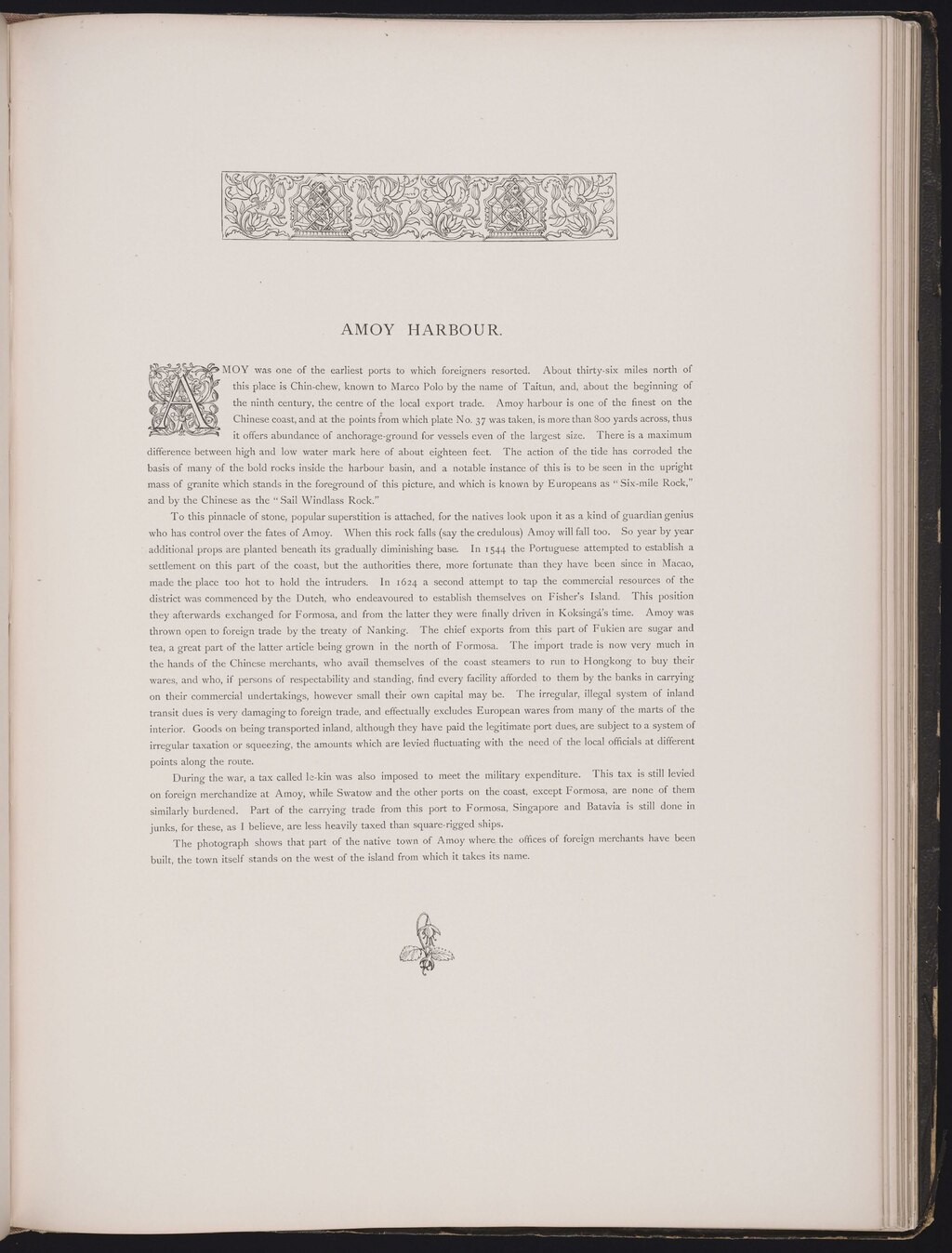AMOY HARBOUR.
AMOY was one of the earliest ports to which foreigners resorted. About thirty-six miles north of this place is Chin-chew, known to Marco Polo by the name of Taitun, and, about the beginning of the ninth century, the centre of the local export trade. Amoy harbour is one of the finest on the Chinese coast, and at the points from which plate No. 37 was taken, is more than 800 yards across, thus it offers abundance of anchorage-ground for vessels even of the largest size. There is a maximum difference between high and low water mark here of about eighteen feet. The action of the tide has corroded the basis of many of the bold rocks inside the harbour basin, and a notable instance of this is to be seen in the upright mass of granite which stands in the foreground of this picture, and which is known by Europeans as " Six-mile Rock," and by the Chinese as the "Sail Windlass Rock."
To this pinnacle of stone, popular superstition is attached, for the natives look upon it as a kind of guardian genius who has control over the fates of Amoy. When this rock falls (say the credulous) Amoy will fall too. So year by year additional props are planted beneath its gradually diminishing base. In 1544 the Portuguese attempted to establish a settlement on this part of the coast, but the authorities there, more fortunate than they have been since in Macao, made the place too hot to hold the intruders. In 1624 a second attempt to tap the commercial resources of the district was commenced by the Dutch, who endeavoured to establish themselves on Fisher's Island. This position they afterwards exchanged for Formosa, and from the latter they were finally driven in Koksinga's time. Amoy was thrown open to foreign trade by the treaty of Nanking. The chief exports from this part of Fukien are sugar and tea, a great part of the latter article being grown in the north of Formosa. The import trade is now very much in the hands ofc the Chinese merchants, who avail themselves of the coast steamers to run to Hongkong to buy their wares, and who, if persons of respectability and standing, find every facility afforded to them by the banks in carrying on their commercial undertakings, however small their own capital may be. The irregular, illegal system of inland transit dues is very damaging to foreign trade, and effectually excludes European wares from many of the marts of the interior. Goods on being transported inland, although they have paid the legitimate port dues, are subject to a system of irregular taxation or squeezing, the amounts which are levied fluctuating with the need of the local officials at different points along the route.
During the war, a tax called lc-kin was also imposed to meet the military expenditure. This tax is still levied on foreign merchandize at Amoy, while Swatow and the other ports on the coast, except Formosa, are none of them similarly burdened. Part of the carrying trade from this port to Formosa, Singapore and Batavia is still done in junks, for these, as I believe, are less heavily taxed than square-rigged ships.
The photograph shows that part of the native town of Amoy where the offices of foreign merchants have been built, the town itself stands on the west of the island from which it takes its name.
